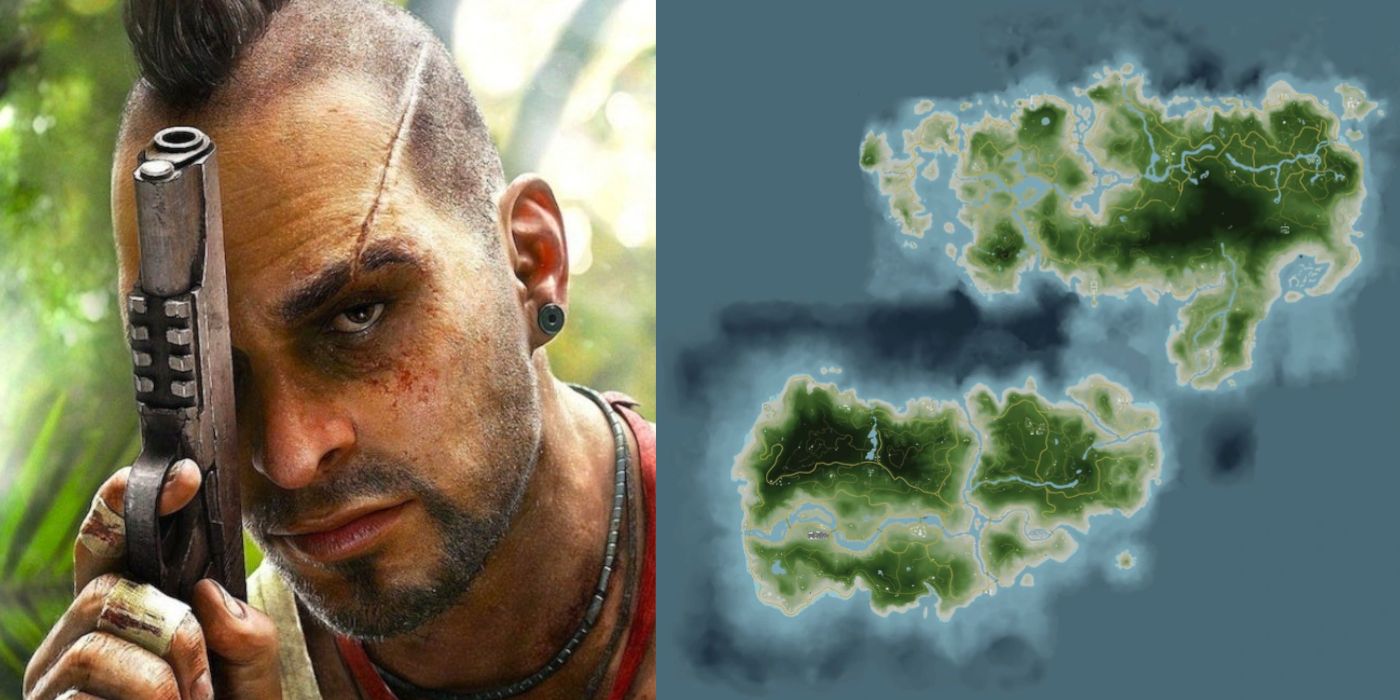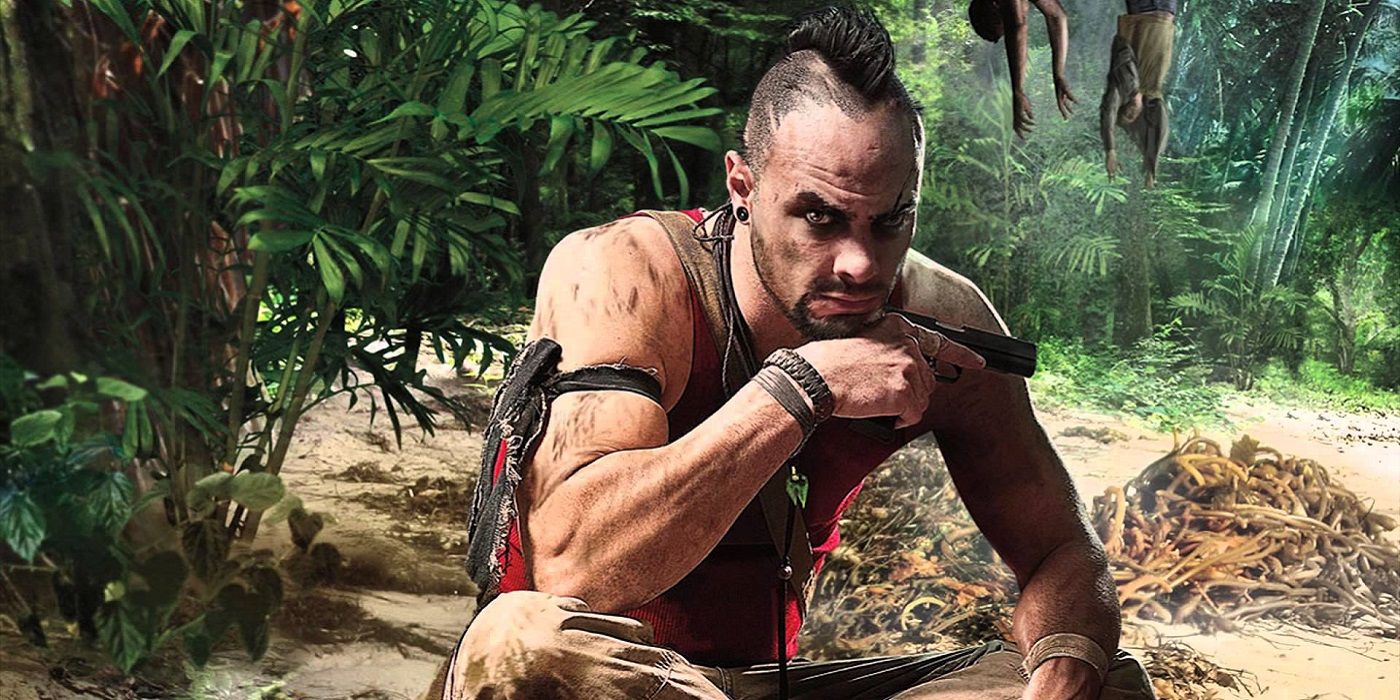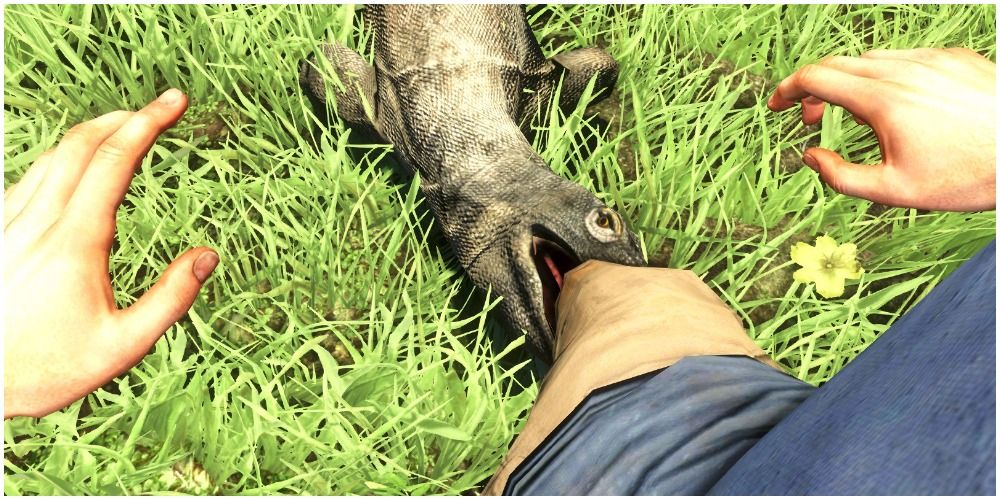Far Cry 3 brought the franchise to the forefront of Ubisoft’s IPs, establishing one of the best received villains of the early 2010s and leaving players with a master class in open-world design. The game took in a lot of influence without merely emulating the many other open-world games of the time, rewarding the most enjoyable parts of gameplay while creating challenges that rarely came at the cost of fun.
Far Cry 3 took some of the best components of other open-world games and created an in-game world perfectly suited for dynamic exploration and memorable unscripted encounters. Some of the best aspects of Far Cry 3’s world design are lessons other developers can learn from.
Building the Rook Islands
Though the expansive design of the Rook Islands were inspired by the massive success of Skyrim, ultimately their designs would diverge. Far Cry 3 is not an RPG, and the vast majority of the encounters to be had in its world are immediately hostile, from pirates to mercenaries to dangerous wildlife. While Ubisoft used the Dunia Engine to procedurally generate much of the landscape, the locations were placed in the game manually, and with a logic that makes exploring the world particularly enjoyable.
Mark Thompson, the game’s level design director, said in an interview with IGN shortly after the game's release that a priority was to create the feeling of a “space that exists for a reason.” For example, players can find areas in-land where timber is being cut down that are near to other enemy bases by the coast where that same timber can be shipped out. Without the need for any additional RPG-style dialog, Far Cry 3’s setting not only tells a story but allows players to use their own common sense when exploring, immersing them in the world.
The design systems used to create enemy hubs allowed them to be created almost on the fly, with the developer diving in to test their creations then hopping back out to make additions and edits. As a result, there is very little repetition in Far Cry 3–there is no standard enemy base which is copy, pasted, and reskinned across the map, making a relatively small open-world feel far larger and worthy of exploration.
Telling Dynamic Stories in Far Cry
Far Cry 3 was also sure to reward the most enjoyable parts of its gameplay. While undoubtedly a power fantasy, the game didn’t penalize running and gunning, letting players use everything from ziplines to local wildlife to take out enemies. Unlike other successful open-world games like Red Dead Redemption 2, the different endings to Far Cry 3 aren’t dependent on how players engage with the gameplay, only key decisions they make at certain points in the story. This allows them to engage with the world however they find most enjoyable.
Far Cry 3 also took a clever note from Fallout’s book, including a car radio will memorably dissonant tunes from "Hawaiian Cocktail" to "Ukulele Girl" that transformed crashing head-first into a firefight between a gang of pirates and an escaped Sumatran tiger from a random accident into a brilliantly soundtracked scene straight out of a self-aware action movie. Like many of Far Cry 3’s features, Ubisoft’s inclusion of the radio isn’t about fine-tuning specific experiences, but giving players and the world the tools to create memorable cinematic moments themselves.
The Far Cry series has become one of Ubisoft’s staples, and that’s come with its ups and downs. However, if the next game is able to recreate the dynamic game world of Far Cry 3, there will be less pressure on Ubisoft to live up to the third game’s fantastic story and characters – the best part of Far Cry 3 are the random experiences and unique stories the world helps create on its own.
Far Cry 6 is in development.



